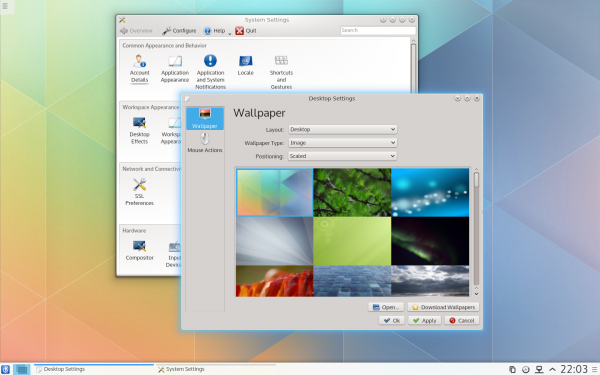
If you have a decent computer and you are interested in dabbling in Linux, KDE is where you might want to start. You see, there are many desktop environments for Linux, but Windows users would probably feel most comfortable in KDE -- it resembles what they are used to, with things like a start button and menu.
Beginners aside, advanced Linux geeks use KDE too -- it is powerful, beautiful and well designed. Today, KDE releases the first beta of Plasma Next and is looking for testers and feedback.
"The Plasma team would like to ask the wider Free Software community to test this release and give any feedback. Plasma Next is built using QML and runs on top of a fully hardware-accelerated graphics stack using Qt 5, QtQuick 2 and an OpenGL(-ES) scenegraph. Plasma Next provides a core desktop experience that will be easy and familiar for current users of KDE workspaces or alternative Free Software or proprietary offerings. You can find more details on the upcoming Plasma Next release in the alpha release announcement. Plasma Next is planned to be released in early July", says the KDE team.
The team further explains, "the workspace demonstrated in this pre-release is Plasma Desktop. It represents an evolution of known desktop and laptop paradigms. Plasma Next keeps existing workflows intact, while providing incremental visual and interactive improvements. Many of those can be observed in this technology preview, others are still being worked on. Workspaces optimized for other devices will be made available in future releases".
Of course, as this is a beta, you should avoid using it on a production machine. The KDE team discloses the following known issues:
- Stability is not yet up to the level where the developers want Plasma Next. With a substantial new toolkit stack below come exciting new crashes and problems that need time to be shaken out.
- Performance of Plasma Next is heavily dependent on specific hardware and software configurations and usage patterns. While it has great potential, it takes time to wrangle this out of it and the underlying stack is not entirely ready for this either. In some scenarios, Plasma Next will display the buttery smooth performance it is capable off - while at other times, it will be hampered by various shortcomings. These can and will be addressed, however, much is dependent on components like Qt, Mesa and hardware drivers lower in the stack. Again, this will need time, as fixes made in Qt now simply won't be released by the time the first Plasma Next version becomes available.
- Polish is a major benefit of QML2, as it allows seamless usage of openGL, much more precise positioning and many other abilities. At the same time, the immaturity of Qt Quick Controls, the brand new successor to the 15+ year old Qt Widgets technology, brings some rough edges yet to be smoothed out.
If you are interested in testing, but do not want to risk ruining your computer, no worries. You can run a live environment off a DVD, by downloading and burning the ISO here.
Will you test it? Tell me in the comments.
Image Credit: Miriam Doerr/Shutterstock

